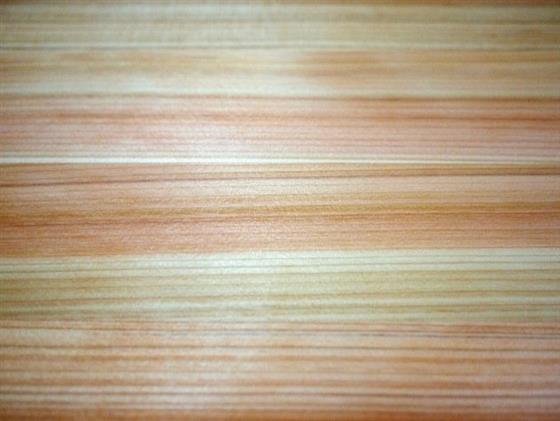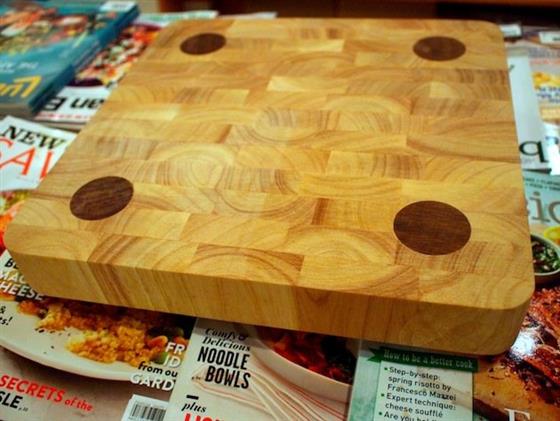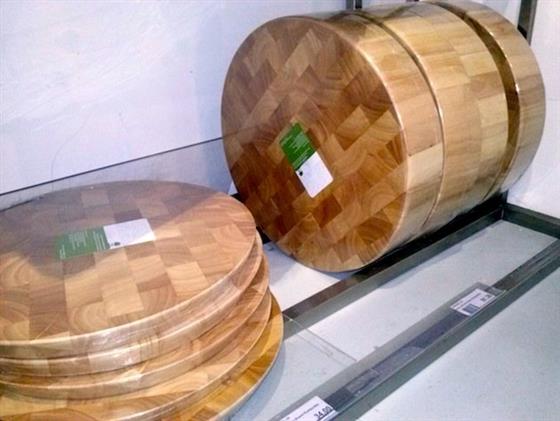
The Charms Of Wooden Chopping Boards
By Hong Xinyi - Wednesday, Apr 24, 2013
They are more expensive, more cumbersome, more difficult to maintain, and harder to find. So why on earth would any sane cook choose a wooden chopping board over a plastic one? The answer, as is so often the case with matters that relate to cooking, is simple: Sometimes, that little more trouble is well worth it.
First, the pragmatic reasons. Wooden chopping boards tend to be kinder to your knives than plastic ones. This is especially the case with endgrain chopping blocks, where the cutting surface comprises the ends of many individual pieces of hardwood that have been arranged so that the grain of the wood runs vertically. You can recognise endgrain boards by their distinctive checkerboard pattern.

When the grain is aligned in this way, the knife cuts between the fibres of the wood, helping the blades stay sharp for a longer period of time. The cuts made on the board will also ‘heal’ as the fibres close up, meaning there is less risk of deep cuts harbouring bacteria. This self-healing element is also true to a slightly lesser degree with the more common flatgrain chopping boards, where the grain of the wood runs lengthwise. Another plus: Wooden boards have natural anti-bacterial properties.
Now, for the aesthetic reasons. A quality chopping board has an artisanal quality that a plastic one will never possess. Many regions of the world are in fact known for specific types of well-crafted wooden chopping boards. Japan uses hinoki, a cypress with a lemony scent that is also used to build bathhouses. New England is known for its maple boards, while acacia boards are common in Southeast Asian countries like Thailand.

The texture, colour and grain of wooden boards can be exceptionally beautiful, developing a lovely patina as they age. Thinner wooden boards can even double up as rustic serving platters. And eco-warriors don’t have to fret: Pick boards from environmentally conscious brands that specify sustainable or repurposed wood sources.
Though plastic and bamboo boards are the most commonly available options these days, there are an increasing number of places in Singapore where you can pick up wooden boards. (Bamboo is technically a grass, not a wood. While it is a fast-growing eco-friendly material, its toughness can also be hard on your knives.) These can be found at stores like Ikea, Muji, Crate & Barrel, and specialty kitchen supplies stores such as ToTT along Dunearn Road and Chip Bee Garden’s Lemon Zest.

Here are some selection and maintenance tips from Lemon Zest’s Dalia and Crate & Barrel:
1) A fairly large cutting board is the most versatile tool in the kitchen for cutting meats and chopping vegetables. But remember to consider how much counter space you have so your cutting board rests firmly during use and does not become a hazard.
2) Use the thinner boards for cutting vegetables, herbs and cheese, while thick blocks be used for serious cleaver-wielding butchery. Boards with a groove around the perimeter are also good for capturing the juices of fruits and meat.
3) Before using your new wooden board, you need to season it. Warm a small amount of food-grade mineral oil on the stove top and apply it to the board using a dry cloth. Warm oil is easier for the wood to absorb. This process conditions the wood, helping to prevent cracking, drying, odour absorption, and seals the wood against bacteria.
4) Repeat the oiling about once a month to keep your board in tiptop condition. Mineral oil for wooden chopping boards can be purchased from places like Lemon Zest and Ikea, or ordered from Crate & Barrel. Do not use olive, canola, sunflower or palm oils. These will turn rancid, making your board smelly and sticky.
5) Handwash your board using a non-abrasive sponge and mild detergent after use. Wipe away all excess water and let it dry while resting on one end, instead of laying flat. Never soak a wooden board in water. This will help to prevent mold.


